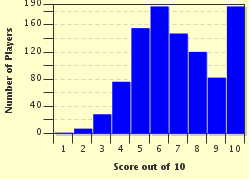Quiz Answer Key and Fun Facts
1. Built on a plateau located more than 2700 meters above sea level, which of the following is a walled city found in Yemen?
2. One of Yemen's claims to fame is the first discovery of dinosaur footprints on the Arabian Peninsula.
3. The societal role of women in Yemen has remained the same from ancient times to the modern day.
4. The country we know today as the Republic of Yemen has had different names in the past. Which of the following has NOT been one of its names?
5. Which mountain is the highest point in Yemen?
6. Yemen is divided in twenty governorates. Which of the following is the governorate with the largest surface?
7. Like most middle-eastern countries, Yemen has access to vast resources of oil and gas for export use. Yemen also exports other minerals and agricultural products but, of the following list, which is NOT one of Yemen's export products?
8. The flag of Yemen was adopted in 1990 at the time that North and South Yemen were unified into one country. The flag is red, white and black striped with each colour having a particular meaning. What is the representation of the centre (white) section of the flag?
9. Which of the following natural hazards is typical to a Yemeni summer?
10. Yemen has dozens of seaports, situated either on the Red Sea or on the Gulf of Aden. One of the ports on the Red Sea reminds me of something in the kitchen. What is the name of this specific harbor?
Source: Author
lones78
This quiz was reviewed by FunTrivia editor
Pagiedamon before going online.
Any errors found in FunTrivia content are routinely corrected through our feedback system.

